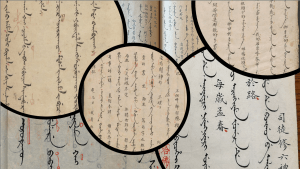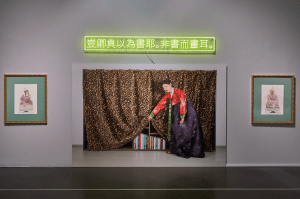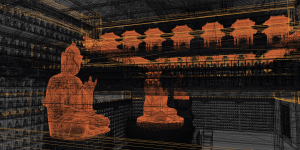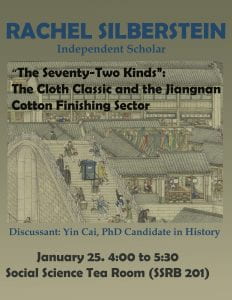We cordially invite you to join us on Wednesday, May 1, at 4:45-6:45pm CT, CWAC 152 for our next VMPEA workshop. This workshop features:
Sizhao Yi
PhD Candidate, Art History, UChicago
Who will be presenting the paper titled:
“Melancholic Things in Chen Hongshou’s Sixteen Views of Living in Reclusion”
Discussant: Yun-chen Lu
Assistant Professor, History of Art and Architecture, DePaul University
This workshop will take place in-person. Please see the abstract and bios for this workshop below.
We hope to see many of you there!

Image: Chen Hongshou, Album leaf from Sixteen Views of Living in Reclusion, 1651. National Palace Museum, Taipei.
Abstract:
In this talk, I will explore the affective effect of things in the visual repertoire of Chen Hongshou (1599-1652) through two paintings from the painter’s late masterpiece, the Sixteen Views of Living in Reclusion album. In these works, objects – a group of inkstones and a covered zither – are portrayed with rich yet peculiar details, interacting intimately with the figures. By closely attending to the pictorial details and analyzing them within the historical context, I will suggest that these objects and their interactions with the figures delineate the nuances of the yimin sentiments towards the fallen Ming Dynasty among early Qing scholars. In fact, these objects are painted with such intentionality, subtlety and vividness that they visualize, materialize, and even animate the abstract mental state of melancholy. Through these objects, the viewer is not only reminded of but also let to reflect upon and even feel the past and its vestiges.
Bios:
Sizhao Yi is a PhD candidate specializing in the visual and material culture of Late Imperial China. Her dissertation engages with issues of material and materiality, image making, intermediality, and the agency of things through the lenses of Chen Hongshou’s artistic practices and his engagements with material artifacts. Prior to starting her PhD, she received a Bachelor’s degree in Journalism from the University of Hong Kong, and an MA from the University of Chicago. She also interned at the textile conservation department in the Archaeology Institute at Chinese Academy of Social Sciences. She currently serves as the Rhoades Curatorial Intern and Frankenthaler/Taylor Fellow at the Art Institute of Chicago.
Yun-chen Lu is an Assistant Professor of History of Art and Architecture at DePaul University. She specializes in Chinese painting and calligraphy, visual and material culture, artists with disabilities, and East Asian interregional art history. Her current research project investigates the relationship between artists with disabilities and the trend of artistic eccentricity in eighteenth-century Yangzhou, and the development of disability art and aesthetics in China. Before joining DePaul University in 2022, she was a predoctoral research fellow at the Smithsonian’s National Museum of Asian Art.



 Image: Shimada Yoshiko, Becoming a Statue of a Japanese ‘Comfort Woman’ & The Tomorrow Girls Troop, Against Forgetting. Photograph by Qianwen Jiang.
Image: Shimada Yoshiko, Becoming a Statue of a Japanese ‘Comfort Woman’ & The Tomorrow Girls Troop, Against Forgetting. Photograph by Qianwen Jiang.


